Barking dry cough in a child without fever
Cough occurs in response to any irritant of the mucous membrane receptors in the bronchi. It can be a foreign body, dust particles. Often, coughing in children is a normal physiological phenomenon.
If the child has a dry and barking cough and there is no fever, then there may be several reasons:
- foreign object;
- infection;
- allergic reaction;
- dry air;
- nervous disorders.
Babies under five years of age have a narrower larynx than older children, so breathing may be difficult if edema is present.
The ingress of a foreign object causes a sharp and painful cough. In this case, you must immediately call a doctor.
A serious symptom will be frequent bouts of coughing that keep the baby awake or accompanied by vomiting.
In winter, when the air in the apartments is dry, many babies experience mucosal irritation and a dry cough. Encourage your child to drink more often and use a humidifier.
Dry barking cough in a child with a fever
One of the reasons for a dry barking cough with a temperature in babies up to one year old is false croup. The cough comes on suddenly, accompanied by a hoarse voice, wheezing. This is a very dangerous disease for young children, as they have a very narrow lumen in the larynx. When edema appears, the baby begins to choke. Blue discoloration may appear in the area of \u200b\u200bthe nasolabial triangle. In no case can it be treated on your own. We urgently need to call an ambulance.
Laryngitis can also be the cause of this condition. This is inflammation of the vocal cords as a result of bacterial or viral infection... There is pain when swallowing, as well as a runny nose.
If a child has parainfluenza or an adenovirus infection, then a barking cough appears due to inflammation of the laryngeal mucosa. The general condition of the baby is greatly deteriorating. The body temperature rises to 40 ° C and is accompanied by muscle and headache.
Diphtheria and whooping cough are not common today. But they also have similar symptoms.
Dry barking cough in a child at night
For the treatment of bronchitis or tracheitis, the doctor will prescribe mucolytic agents. These include Bromhexin, Lazolval, Ambrobene.
Allergies are eliminated with antihistamines.
Antibiotics, antitussives and antibacterial drugs are used to treat whooping cough.
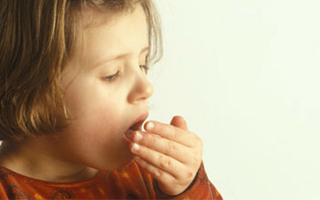
How to relieve a child's dry barking cough
To relieve a baby's dry barking cough, use traditional medicine recipes.
Give your baby warm milk with a little baking soda.
The juice of black radish with sugar or honey helps a lot.
Give your child a rosehip or oat broth, cranberry and viburnum fruit drink.
Rub with badger fat or camphor oil.
Ventilate and humidify the room often.
Steam inhalation with herbs and baking soda. Very effective remedy for this is a nebulizer.
Soak your feet and hands warmly.
Dry cough in a child, how to treat?
It is very important not to delay the treatment of dry cough, as this leads to the development of dangerous diseases. Use drugs that suppress the cough reflex. You can use them for no more than five days. Then cough drops with extracts of oils and herbs help. You can be treated with breast fees No. 1 and No. 3. Perform rubbing, put compresses and mustard plasters. Spend more time outdoors when your baby's condition improves, but try to avoid contact with other people.
A barking cough in a child is a widespread symptom in pediatric practice that occurs against the background of a common cold or allergic rhinitis in children of different ages.
In newborns and infants, a barking cough against the background of a runny nose or acute stenosing laryngotracheitis develops several times more often than in a child over three years old.
A barking cough is characteristic of the lower respiratory tract in the initial stages, without sputum discharge.
It develops with inflammation of the larynx, bronchi and trachea, disrupts the general condition of children due to changes in the physiological act of respiration, an increase in hypoxia and spasm of the respiratory muscles. Diseases that cause a barking cough in a child include the most dangerous infection for early childhood - whooping cough.
For this pathology, attacks of continuous coughing with pale face, protruding tongue and a sharp whistling breath at the end of the cough paroxysm are pathognomonic. Parents seek help from a doctor from the first symptoms of the disease to start antibiotic therapy and prevent complications.
Causes of a dry barking cough:
- allergic bronchitis, tracheitis;
- bronchial asthma (debut, initial stages);
- acute stenosing laryngotracheitis;
- flow of mucous discharge with severe nasal congestion;
- colds (flu, ARVI);
- infectious diseases (whooping cough, diphtheria, adenovirus);
- foreign bodies of the upper and lower respiratory tract.
Allergic diseases develop as a result of the pathological reaction of the child's body to the ingress of an allergen. The inflammation is eosinophilic and progresses steadily into bronchial asthma with the gradual manifestation of symptoms of progressive bronchial obstruction.
Symptoms of a barking cough in a child are repeated dry cough tremors, accompanied by a sharp breath, soreness (burning sensation behind the breastbone). The mild course of viral infections begins with a dry cough that develops into a wet one. The symptom of loss of voice indicates damage to the larynx and vocal cords.
Cough in children early age develops as a result of mucus flow from the nasal passages with a runny nose against the background of a cold. The rare granulosa pharyngitis with massive vegetation into the lumen of the respiratory tract leads to irritation of the pharyngeal wall, leading to a prolonged severe cough.
A barking cough in a child requires early treatment, which is due to the high risk of complications. With an attack of acute stenosing laryngotracheitis, emergency care is indicated to restore the normal lumen of the airways. Bronchial asthma and infectious diseases differ in the methods of drug exposure, the principles of drug therapy.
Cough is a physiological reaction aimed at clearing the lumen of the bronchi and trachea from mucus, however, with excessive accumulation of cough, it turns into attacks that disrupt the child's night sleep. With severe allergies, nasopharyngeal edema and allergic rhinosinusitis, excessive exudate formation leads to a cough in the morning. The risk of developing bacterial bronchitis or tracheitis as a result of bacterial invasion increases, especially in young childhood.
Treatment with medicines for a barking cough in a child is prescribed by the attending physician after examination and auscultation of the patient, taking into account the conditions of occurrence and characteristics of the cough.
Drug treatment has several directions:
- etiotropic (antibacterial, antiviral, antimycotic);
- expectorant;
- mucolytic;
- antitussive;
- vasoconstrictor;
- bronchodilator.
How to relieve a child's condition with a barking cough? A copious fractional drink with the addition of citrus or berry fruit drinks reduces the risk of intoxication, improves the condition of the mucous membranes and stimulates the production of sputum. Taking medications prescribed by pediatricians on a schedule provides healing effect by the end of the first day of the disease.
An active lifestyle of a child in the absence of temperature and sharp violations of the general condition leads to an improvement in breathing, restoration of airway patency. Aromatherapy in the absence of bronchial asthma has a general relaxing and restorative effect.
Useful advice from Dr. Komarovsky and domestic pediatricians on caring for a child with a barking cough:
- when coughing, the child lies in bed on a high pillow to prevent inflammation of the lower respiratory tract;
- when prescribing mucolytic drugs, a large consumption of liquid is shown (fruit drinks, water, compotes);
- the use of a humidifier and air ionizer speeds up the healing process;
- the use of medicinal herbs and decoctions with the permission of the pediatrician has a beneficial effect on the condition of the mucous membrane of the respiratory tract.
Prevention of a barking cough in a child is aimed at preventing mucus leakage, the use of vasoconstrictor drops and regular rinsing of the nose, and the use of a suction for severe rhinitis. An early visit to a doctor will prevent the progression of infectious diseases, whooping cough, flu and colds.
The use of expectorant syrups during the first signs of the disease reduces the risk of developing cough symptoms by protecting the mucous membrane and stimulating the outflow of mucous exudate. Reviews on the forums note the high efficiency of vasoconstrictor therapy in the prevention of stenosing laryngotracheitis.
Barking cough in a child without fever: causes and methods of treatment
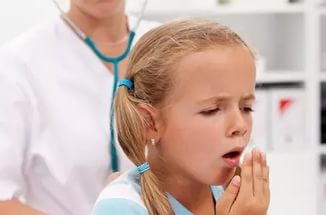 A barking cough in a child without fever develops when chronic diseases respiratory system or ENT organs, against the background of trauma or foreign objects of the bronchi, trachea. Depending on the general condition of the baby, the doctor prescribes a treatment plan and determines the methods of specific therapy.
A barking cough in a child without fever develops when chronic diseases respiratory system or ENT organs, against the background of trauma or foreign objects of the bronchi, trachea. Depending on the general condition of the baby, the doctor prescribes a treatment plan and determines the methods of specific therapy.
The symptom is widespread in pediatric practice among children of early preschool and school age. Typical for various diseases, in the absence of treatment, a prolonged barking cough without fever progresses steadily in most cases, leading to the development of complications that significantly reduce the child's quality of life.
Causes of a barking cough in a child without fever:
- nonspecific inflammation (ENT organs, upper respiratory tract, bronchi, trachea, lungs);
- infection (influenza, parainfluenza, measles, SARS, whooping cough, adenovirus, cytomegalovirus) against the background of primary or secondary immunodeficiency;
- allergies (hay fever, sinusitis, bronchial asthma);
- trauma (foreign bodies, damage to the esophagus);
- tracheoesophageal fistula;
- cardiac arrhythmia (extrasystole, vegetative-vascular dystonia).
The penetration of the virus into a weakened organism with immunodeficiency is not accompanied by a typical hyperthermia reaction. The infection develops at normal body temperature, requires complex treatment with the use of etiological agents and drugs to stop the reproduction of a pathogenic microorganism.
Unlike a wet cough, a barking cough in a child without fever is accompanied by a burning sensation in the throat, irritation of the bronchi and general disorders. With laryngitis, the child loses his voice, switches to whispering. The combination of allergic and infectious pathology is characterized by a severe course, a long recovery period.
A barking cough in a child without fever at infancy is a sign of a fistula thoracic esophagus, through which food enters airwayscausing irritation and prolonged inflammation. A persistent cough in childhood is a diagnostic problem that interferes with physiological respiration and the normal development of the child.
Treatment is aimed at restoring the mucous membrane of the bronchi and trachea. Expectorant drugs are prescribed, combined with mucolytics for the treatment of bronchitis, laryngitis and pharyngitis.
Derivatives are used:
- acetylcysteine \u200b\u200b(ACC, Vicks, Fluimucil);
- carbocisteine \u200b\u200b(Libexin, Bosalek);
- ambroxol (Lazolvan, Ambrobene, Ambrohexane);
- bromhexine (Nycomed, Bronhosan).
Bronchodilator drugs are used for bronchospasm and chronic obstruction to expand the lumen of the bronchi and restore breathing. The rapid onset of the effect allows the use of inhalers during asthma attacks, exacerbation of bronchitis of a smoker, obstructive pulmonary disease.
Barking cough in a child with fever: causes and methods of treatment
A barking cough in a child with a fever is a widespread symptom, characteristic of both acute and chronic diseases.
Infectious diseases accompanied by this syndrome:
- acute respiratory viral infections (rhinovirus, anovirus, influenza, parainfluenza);
- mononucleosis;
- tuberculosis;
- whooping cough;
- bacterial infection.
A strong paroxysmal cough in a child is a pathognomonic sign of whooping cough, a childhood infectious disease. When easy course whooping cough symptoms of cough increase up to 7 days and persist for up to two weeks, after which they begin to slowly fade. The severe course of the disease is characterized by a sharp increase in coughing attacks from 5 to 8 days, a high risk of developing complications characteristic of whooping cough.
 A rough cough against a background of general weakness occurs as a result of edema of the mucous membrane, impaired air permeability in the upper and lower respiratory tract. The condition is accompanied by high temperature, general intoxication, requires an urgent start of treatment.
A rough cough against a background of general weakness occurs as a result of edema of the mucous membrane, impaired air permeability in the upper and lower respiratory tract. The condition is accompanied by high temperature, general intoxication, requires an urgent start of treatment.
Treatment of a barking cough in a child with a temperature has several features due to the physiological differences of the child's body. In childhood, the most effective drugs are in liquid form, mixtures or syrups. Treatment of cough against the background of a cold begins with the use of vasoconstrictor drops. Before starting treatment, it is required to create comfortable air conditions, humidification, ionization.
Powerful antibiotic therapy is indicated to relieve signs of infection with gram-positive or gram-negative microbes. Antiviral treatment is prescribed for influenza, rhinovirus, and adenovirus infections of the respiratory tract.
Folk remedies are aimed at restoring the mucous membrane of the upper respiratory tract, reducing the production of sputum and mucus. Individual herbal infusions, such as oak bark, affect the degree of intensity inflammatory process, reducing the production of pro-inflammatory enzymes in the lesion.
Linden, marshmallow and plantain, according to reviews on the forums, are used as antitussives, but can only be used after consulting a doctor due to the risk of development side effects... Breast collection is the safest and most versatile method of gently relieving a barking cough in a child with a temperature over 10 years old.
Dry barking cough in a child: when it occurs, urgent ways to help and treatment with folk remedies
 A dry barking cough in a child develops against the background of an acute viral infection as a result of an inflammatory reaction from the respiratory tract.
A dry barking cough in a child develops against the background of an acute viral infection as a result of an inflammatory reaction from the respiratory tract.
Severe edema of the mucous membrane leads to a narrowing of the lumen of the larynx or bronchi, which leads to irritation of the cough receptors and disruption of normal breathing.
In contrast to adults, in childhood there is a high risk of developing acute stenosing laryngotracheitis. An unproductive cough in acute pharyngitis is provoked by vegetation of the pharyngeal mucosa, the flow of mucus into the lower respiratory tract. Urgent ways to help your child. If the condition develops sharply, accompanied by loss of consciousness and increasing cyanosis, it is required to call a doctor at home by calling the emergency services.
While waiting for the arrival of an emergency, parents bury vasoconstrictor drops into the nose at an age-specific dosage of 3-4 drops in each nostril. Then the child and the parent are in the bathroom with hot water turned on for steam inhalation, which removes the swelling from the mucous membrane of the respiratory tract.
Self-administration of medication for the initial episode is categorically contraindicated, since the risk of an allergic reaction is not excluded. Treatment folk remedies allows you to quickly eliminate cough symptoms at home.
Treatment methods:
- tinctures and decoctions of herbs, honey and propolis with the addition of soda are extremely effective in combating the manifestations of cough by facilitating breathing, improving the outflow of sputum, reducing its formation;
- warm or hot compresses, applied to the bronchial area like a mustard plaster, stimulate blood circulation in the affected area, have a powerful warming effect;
- steam inhalations are aimed at increasing the outflow of sputum, cleanse the upper and lower respiratory tract, relieve inflammation of the mucous membrane.
Treatment of dry barking cough in a child with herbs:
- oregano;
- anise;
- mother and stepmothers;
- elecampane;
- wild rosemary;
- pine buds;
- sundew;
- ipecacuanas;
- violets;
- marshmallow;
- licorice;
- thyme;
- plantain;
- thermopsis.
Possible complications include spread (generalization of the infection) with colds or bacterial diseases, lung damage. With whooping cough, the consequences are dangerous by stopping breathing, intracerebral hemorrhages at the height of the cough shocks.
When bronchial asthma Complications include persistent bronchospasm and status asthma, when breathing becomes shallow, weak, and symptoms of oxygen starvation increase. With allergic bronchitis, the development of anaphylactic shock and Quincke's edema with a high risk of death in the absence of specific therapy is dangerous.
It occurs in the presence of a pathological process leading to significant edema of the laryngeal mucosa - it is concentrated mainly in the area of \u200b\u200bthe vocal cords and subglottic space.
In addition to edema, a large amount of mucus secretion is important in the formation of stenosis.
The harsh, loud and staccato sound of the cough, which makes it sound like a dog barking, also resembles the croaking of a crow.
A barking cough accompanies diseases such as:
- True croup.
True croup is called laryngeal diphtheria. This is an infectious disease caused by the diphtheria bacillus, a pathogenic gram-positive bacterium. It provokes fibrinous inflammation - an accumulation of fibrinous exudate, which in the form of films tightly adhering to the mucous membrane covers the affected surface. - False croup.
It develops in the presence of an infection - most often viral (influenza, parainfluenza, adenovirus, measles and other acute respiratory viral infections). It is based on laryngitis, that is, inflammation of the larynx, against which edema can begin. - Allergic laryngotracheitis.
The pathological mechanism is triggered by contact with an allergen. The child develops a barking cough without fever and previous signs of SARS. Allergic edema is observed in children prone to frequent allergic reactions, occurs suddenly, characterized by a rapid narrowing of the larynx.
Laryngeal edema is possible as a result of burns chemicalswhen inhaling hot air.
It is also similar to a barking rough cough without fever in infants, which accompanies spasmophilia due to increased neuromuscular excitability and manifested by convulsions, laryngospasm.
Why is croup dangerous?
The main danger of croup is asphyxiation, or suffocation. With fibrinous inflammation, the air is prevented from passing through dense films, in other cases - widespread edema, spasm of the larynx. Most often, croup is observed in children of the younger age group (from 6 months to 3 years), especially in the first 2 years of life.
In a small child, the lumen of a healthy larynx is small, therefore, an increase in tissue as a result of edema, even by a millimeter, has serious consequences in the form of serious breathing disorders.
In winter, the number of cases of croup increases sharply: this is facilitated by dry air in houses, the presence of a child in a team in closed rooms instead of walking in an open space, and seasonal circulation of respiratory viruses.
The deterioration is explained by the fact that in a horizontal position, the subglottic space swells more strongly, and actively produced mucus does not cough up - laryngospasm occurs.
If the child drinks little, sweats profusely, then the viscosity of the mucus increases, and in dry warm air it dries up, turning into a kind of cork or crust, due to which the lumen is blocked.
Symptoms
A barking cough in a child is one of the symptoms of laryngitis, but laryngitis is not yet croup until signs of narrowing of the larynx appear; the popular pediatrician Komarovsky focuses on this.
If breathing is disturbed without temperature and signs of intoxication, you need to think about a non-infectious process. Croup can occur in any child; adults who are nearby, it is important to know about the "alarming symptoms", except for a rough barking cough:

The onset of croup symptoms is usually noted at night. When infectious diseases signs of stenosis complement the already existing picture of rhinitis (runny nose), fever, sore throat. A barking dry cough in a child with fever suggests ARVI.
It means high risk false croup, which is characterized by a sudden onset. Intoxication syndrome with a typical form of diphtheria may not have vivid manifestations, therefore, the body temperature rises to subfebrile numbers or remains normal.
Respiratory distress occurs slowly, sequentially and in stages - over several days. The toxic form is characterized by edema of the subcutaneous tissue of the neck.
Treatment
How to treat a barking cough in a child depends on the etiology of the underlying disease, among the symptoms of which it is present. It is important to know what parents and grandparents can do before the arrival of the local doctor or ambulance crew:
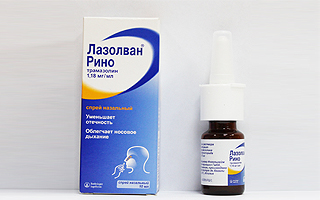
Drugs that thin sputum (lazolvan, acetylcysteine) are not needed at the prehospital stage - the validity of their appointment for croup in a child should be determined by the doctor. If the mucus is already liquid, there is a risk of increasing its volume and thereby worsening the patient's condition.
Inhalation with hot steam is also harmful. It is useful to go out into the fresh air - on the balcony or on the street, nevertheless protecting the child from the draft - he should be dressed according to the weather.
As a specific etiotropic therapy for diphtheria croup, it is necessary to administer antitoxic anti-diphtheria serum, with a known etiology and severe course of ARVI, antiviral agents (cycloferon, viferon).
Antibiotic therapy (ampicillin, amoxicillin, erythromycin) is required for diphtheria, a complicated form of a respiratory infection.
In case of severe stenosis, hospitalization is needed, oxygen therapy, glucocorticosteroids (prednisolone, dexamethasone), inhalation with adrenaline, hydrocortisone through a nebulizer. With severe anxiety, sedatives.
In the treatment of allergic edema, in addition to hormones, beta-agonists (salbutamol), anticholinergic drugs (ipratropium bromide) are also used. Mucolytics (ambroxol, lazolvan) are used if the mucus is very viscous and poorly evacuated from the respiratory tract.
Tracheal intubation and tracheostomy are used only in the absence of the expected response to drug therapy and the threat of asphyxia.
Their child. But if a child has a dry barking cough, then most of them start to panic. In this state, it is more difficult to help the baby, so let's calm down and find out the reasons why he suddenly started barking like a dog, and also consider options for alleviating this condition.
A barking cough in children occurs suddenly, more often at night or in the morning when waking up. It is impossible to confuse it with another type of cough. The patient makes rough sounds, like a dog barking.
At the same time, the phlegm does not go away, it feels like the baby has something stuck in the airways and he is just trying to get rid of foreign body by coughing up.
The barking cough increases. Within a few minutes, the child can begin to choke. Breathing becomes hard and very noisy, whistling is heard. At the same time, the baby cries because of fear and misunderstanding of what is happening to him. Crying strongly affects the intensity of the attack, intensifying the manifestations.
Due to the severity of the situation, the speed of the attack, as well as the fact that there may be several reasons for coughing, in any case, you will have to call a doctor.
The reasons why there is a barking cough
A common factor contributing to the development of a barking cough attack is the penetration of a viral, bacterial or allergic agent into the child's body. Sometimes such a cough may not be preceded by anything, in other cases, on the eve of an attack, the baby has some signs of a mild respiratory infection.
Diseases, the symptom of which is necessarily a barking cough:
- acute stenosing (false croup);
- due to allergies;
- diphtheria;
- whooping cough.
Sometimes a barking cough can also be accompanied by flu and SARS. It all depends on the constitutional characteristics of the child. For some children, any cold begins with "barking."
Most often, barking cough attacks disturb children aged 5-7 years. Their structure of the upper respiratory tract is slightly different from that of adults. The children's larynx is much narrower, therefore, with the development of its edema, it immediately becomes difficult for the baby to breathe. After the specified age limit, children most often outgrow the problem.
If a child over 7 years old has never had a rough cough before, then with a high probability we can talk about allergies, diphtheria or whooping cough. In any case, an urgent call to a doctor is indispensable.
Drug treatment
 A doctor who arrives on call will give the child a triple injection, usually including suprastin, noshpa and dexamethasone. These injections should be performed at a strict age-specific dosage, while monitoring the response. After that, you will most likely be asked to take your child to the hospital for observation and further treatment.
A doctor who arrives on call will give the child a triple injection, usually including suprastin, noshpa and dexamethasone. These injections should be performed at a strict age-specific dosage, while monitoring the response. After that, you will most likely be asked to take your child to the hospital for observation and further treatment.
Outpatient treatment standardly includes taking antihistamines (Loratadin, Tsetrin, Suprastin), as well as mandatory drugs that relieve puffiness and expanding bronchi (Ventolin, Hydrocortisone, Dexamethasone). Additionally, Noshpa is prescribed to relieve spasms.
After the relief of an acute condition, may be prescribed or to improve the discharge of sputum. If there are signs of bacterial infection, such as fever and intoxication, antibiotics will be needed - which ones, the doctor will decide after the tests, since different infections will require different drugs.
If a child has a barking cough without fever, it is likely that he was provoked by a viral infection, so instead of antibiotics, and will be prescribed.
How to stop an attack at home
If the baby “barks” not for the first time, it is better to memorize in advance the algorithm of actions to provide immediate assistance. While waiting for an ambulance, you can:
- open the window or take the child outside for a stream of fresh air;
- hang a wet towel or a child near the baby's bed to humidify the air;
- open the baby's neck to make breathing easier;
- turn on hot water in the bathroom and hold the child there;
- give the patient a tablet or syrup for allergies according to age (be sure to inform the doctor about this);
- not allow crying;
- drink something warm, but not milk, preferably sour drinks;
- if you have a nebulizer, you can breathe soda, saline with the addition of chamomile, sage, water-based eucalyptus, mineral water.
If a child has a barking cough with a fever, it cannot be treated with warming ointments and steam inhalation. In this case, an attack is an unambiguous indication for hospitalization.
It is impossible to carry out inhalations with the addition of essential oils, as their small particles can stick to the already narrowed airways, thereby preventing the flow of air.
Parents who have got used to the fact that their child reacts by "barking" to infections have drugs in the medicine cabinet for quick help. This can be Salbutamol spray or Pulmicort. Such medications quickly, relieving puffiness and making breathing easier. If parents already know how and how to treat a child with frequent barking cough attacks, hospitalization may not be necessary.
It is important to remember that when a child gets sick, there should be no room for panic. The actions of the parents should be thought out in advance, because here every minute counts. If the child is prone to a barking cough, you need to monitor the humidity in his room, ventilate the room more often, take the baby out for frequent walks, and monitor the completeness of his nutrition. Then it will be more difficult for other diseases to affect your child!
Achelle is familiar to all people. Every year every person encounters it, and some even more than once. It is good if the cough is productive, moist with easily separable phlegm. But more often it is different. An annoying dry cough is a symptom of many diseases of the respiratory system, and it can also have a physiological origin. A barking cough gives an adult considerable discomfort.
This symptom interferes with leading a usual lifestyle, doing work, communicating with people. At night it is exhausting, depriving sleep and rest. As a result, a person's performance decreases, nervous tension arises, and general health worsens.
How to determine that the patient is dealing with a barking cough? This sign got its name due to the similarity with a dog barking. When exhaling, a person makes whistling sounds similar to barking.
The symptom usually begins after a deep breath and lasts a long time. A feeling of spasm occurs... Hoarseness can also accompany a dry barking cough.Reasons and provocateurs
A tearing dry cough can occur for a variety of reasons. Most often, it appears as a result of inflammation. It can be of bacterial or viral origin. Localization of the inflammatory process - nasopharynx, tonsils, trachea, bronchi, vocal cords. Only a doctor can determine where exactly the pathology arose.
Among the diseases:
- Whooping cough
- Laryngitis
- Tracheitis
- Pharyngitis
For any of the above pathologies, hospitalization is required. Otherwise, a constant tearful cough will lead to severe laryngeal edema and suffocation of the patient.
- Croup and whooping cough
Most insidious diseases... The symptomatology at the initial stage is similar to a cold, and the patient does not attach importance to it. This leads to delayed diagnosis, when the disease progresses so much that it requires immediate medical treatment.
- Laryngitis
The most painful disease. Always accompanied by a prolonged clogging cough, which arises sutra and lasts the whole day unabated. At night, the patient feels some relief.
- Tracheitis
The most dangerous of the above pathologies. When diagnosed, it is difficult to distinguish from laryngitis and pharyngitis. The cough is always barking dry and tickling, mainly at night, and the sutra is much worse. The disease is life-threatening and carries the greatest risk of laryngeal edema.
Note that a coughing attack is not always the result of infection or hypothermia. In some cases, it occurs suddenly and is the body's natural defense response to an irritant..The provocateurs of a barking cough that is not associated with an infection can be:
- allergies (often of a seasonal nature, resulting from inhalation of pollen or other irritating air);
- a foreign object that has entered the respiratory tract (crumb during eating or other small particle);
- dry air (dries up the mucous membranes, resulting in sore throat and coughing);
- smoking (physiological smoker's cough);
- psychosomatics.
Less commonly, this sign becomes the first symptom of a tumor. The neoplasm can be in the throat, affect the vocal cords or the lower respiratory system.
Diagnostic methods
 Barking cough in adult patients is not difficult to determine... If you see a doctor, the doctor will ask you to show a worrying sign. As soon as you cough, everything will immediately become clear to him. Further, the physician will have to look for the cause of this symptom. For this, a number of manipulations are carried out.
Barking cough in adult patients is not difficult to determine... If you see a doctor, the doctor will ask you to show a worrying sign. As soon as you cough, everything will immediately become clear to him. Further, the physician will have to look for the cause of this symptom. For this, a number of manipulations are carried out.
- Inspection and questioning. The doctor will visually examine the condition of the larynx and tonsils, palpate the lymph nodes and listen to breathing with a fanndoscope. Already at this stage, the doctor can assume what exactly caused the painful symptom. The patient is also required to be interviewed, where his condition is recorded: body temperature, the presence of additional anxiety, general well-being, lifestyle, and so on.
- Laboratory tests with the appearance of a barking cough are rarely performed. Tests are prescribed if the doctor doubts the reasons for the concern. This necessarily includes general analysis blood and biochemistry. Urine examination is usually not prescribed, since its indicators do not change or undergo slight changes in respiratory diseases.
- If after previous manipulations the cause of the painful phenomenon has not become known, the doctor recommends a number of additional instrumental studies: tomography, X-ray, fluorography.
- In addition, consultation of narrow specialists may be recommended: otolaryngologist, pulmonologist, neurologist, psychologist.
Based on the results of all examinations, the cause of the barking cough is established and the question of a further scheme of actions is decided.
Treatment: when is it needed?
 Many people simply ignore a dry barking cough. How to treat him - they do not know. But they are in no hurry to go for medical help. It must be said that such inaction can have a negative impact on human health and later life.
Many people simply ignore a dry barking cough. How to treat him - they do not know. But they are in no hurry to go for medical help. It must be said that such inaction can have a negative impact on human health and later life.
Therefore, you need to start treatment immediately. Do not try to get rid of the disturbing phenomenon yourself. Get medical help.
Treatment of dry barking cough is only suggested when it is triggered by an infection.... If this symptom becomes physiological and arises as a result of an external stimulus, then therapy consists in providing first aid (removing a foreign object, flushing and clearing the airways, eliminating the allergen, and so on).Eliminate the cause of the cough
 If you are barking, it is likely that the cause is an infection. The appropriate treatment is selected depending on its nature. It is possible to determine whether bacteria, viruses or fungi have provoked the pathology using laboratory research.
If you are barking, it is likely that the cause is an infection. The appropriate treatment is selected depending on its nature. It is possible to determine whether bacteria, viruses or fungi have provoked the pathology using laboratory research.
- With a viral infection (laryngitis, pharyngitis, croup, tracheitis) the patient is prescribed immunomodulating agents and antiviral drugs: Cycloferon, Isoprinosine, Likopid, Polyoxidonium and others. If the patient has good immunity, then the use of all these drugs can be completely abandoned. The body will cope with the virus on its own within 3-5 days.
- Bacterial diseases (bronchitis, tonsillitis) should be stopped with antimicrobial agents. In this case, they should not be abandoned even with strong immunity. The most commonly used are penicillin antibiotics based on amoxicillin and macrolides containing azithromycin. Other types of antibiotics may be prescribed at the discretion of the doctor.
- With laryngospasmcaused by an allergic reaction, the patient requires antihistamines. They are selected for each person separately, taking into account all the characteristics of the body. The first generation drugs (Suprastin, Diphenhydramine) act quickly, but for a short time. They also cause drowsiness. The newest antihistamines (Cetrin, Loratadin) can be taken only once a day. The effect of them is more lasting, but does not come as soon as that of their predecessors.
The use of medicines
A barking cough without fever and signs of illness is often treated with antitussives. These drugs must be prescribed by a doctor, they are not suitable for self-medication. The course of their use is limited to several days, and in case of an overdose, respiratory arrest may occur... Antitussives act on the respiratory center, stopping the disturbing phenomenon. Their action begins within a few hours after ingestion. Drugs for the treatment of barking cough include:
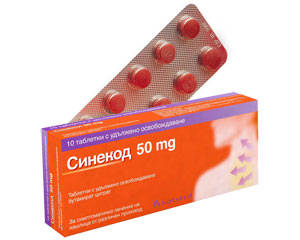
It has a depressing effect on the cough center of the brain. Has a pronounced antitussive effect. Increases lung capacity and relieves. Acts very quickly, contains codeine and is addictive. Children under 12 years of age are prescribed a form of syrup, older - tablets. Reception during pregnancy, lactation, drug addiction is contraindicated. It is unacceptable to use with a wet cough.
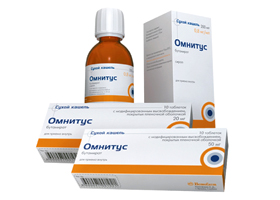
A powerful drug that perfectly stops the cough reflex, including reflex cough after surgery. The advantages include low cost, very fast action. Disadvantages: a large number of side effects, contraindicated in pregnant women during lactation and children under 18 years of age.
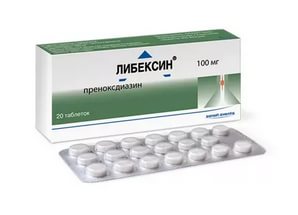
Indicated only for dry barking cough. It has a pronounced antitussive effect, which is based on an anti-inflammatory effect. Relieves local spasm of the airways. The strength of the effect is comparable to that of codeine-containing drugs, it acts very quickly and is not addictive. Contraindications include childhood (up to 18 years), pregnancy and lactation.
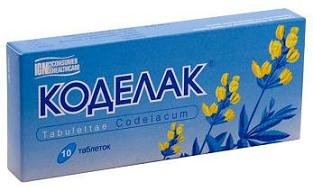
Another codeine-containing drug. Its action is different from the previous ones. It has a strong antimicrobial effect, relieves sore throat and dilates the bronchi, thereby relieving coughs. Not recommended for use with antihistamines, contraindicated in pregnancy and breastfeeding.
Particular care should be taken when taking drugs based on codeine, ethylmorphine, oxeladine. Some antitussives are sold only as directed by a doctor because they contain addictive substances.
You will also be interested in:
Using folk remedies
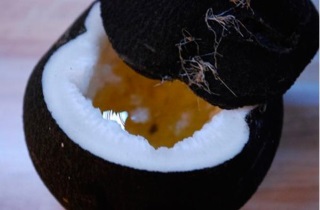 With a barking dry cough, the known folk recipes... They will be effective at early stages diseases when respiratory distress is just beginning.
With a barking dry cough, the known folk recipes... They will be effective at early stages diseases when respiratory distress is just beginning.
- Warm milk with butter and honey... This drink will soften sore throat and will have an antitussive effect. Honey will increase the body's resistance and eliminate disease-causing bacteria. It is important that the food is warm, not hot. You should drink it before going to bed, and after that you need to go under the covers.
- Tea (raspberry, lingonberry, cranberry) will provide the body with vitamin C. This element will restore damaged tissues and have a regenerating effect. It will also increase immunity and lower the temperature during hyperthermia.
- Carrots with milk - a known remedy for the treatment of barking cough. Grate a medium-sized root vegetable and cover it with warm milk. Insist for half an hour, then drink. The procedure is performed before bedtime.
- Sugar radish baked in the oven gives off a healing juice. It will help get rid of a barking cough. Take the resulting product three times a day, a teaspoon, washed down with warm water.
- Herbal decoctions are often used to treat coughs, including barking. Give preference to chamomile, sage, eucalyptus, mint, linden, elderberry, thyme. Pour boiling water over the selected ingredients and let it brew. You can take this remedy instead of tea in unlimited quantities if you do not have allergies.
Treatment of a barking cough with folk remedies is not always effective. If you do not feel better within a few days, then abandon your plan. Be sure to see your doctor for an effective treatment.
Physiotherapy
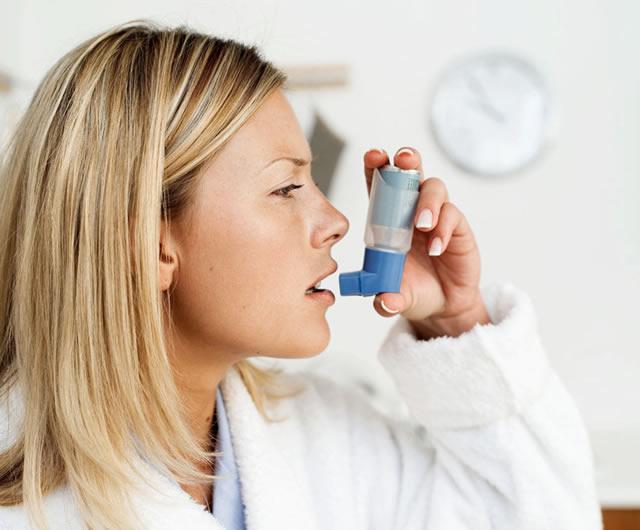 A severe barking cough is treated with physiotherapy. They complement the main purpose and are usually recommended during the recovery phase. There are several types of such manipulations.
A severe barking cough is treated with physiotherapy. They complement the main purpose and are usually recommended during the recovery phase. There are several types of such manipulations.
- Inhalation ( medicines, essential oils or decoctions). You can not do hot inhalation with a barking cough. Doctors prefer to prescribe a bronchoconstrictor agent that relieves spasm and relieves cough. This can be the popular Berodual.
- Warming up with mustard plasters... When coughing, the procedure is performed on the back or sternum. The place of warming up depends on the cause of the pathology. use no longer than 4 days and no more than 15 minutes in one procedure.
- UHF exposure. During manipulation, the human body is affected by an electric field that regulates the work of the respiratory system.
Electrophoresis is a manipulation that allows the delivery of a drug by means of an electric current. The drug for the procedure is prescribed by the doctor in accordance with the patient's illness.
Let's summarize
A barking cough in an adult can indicate serious pathologies occurring in the body. Smokers this symptom appears due to the regular flow of tobacco smoke into the lungs. If the barking cough occurs only in the morning and does not recur during the day, then the airways can be cleared after a night's sleep.
Being in a dusty, gassed room can also provoke an attack of dry cough. Asthma presents with a barking cough, but patients with this diagnosis are usually aware of it and have an emergency aid on hand.
Jun 9, 2017 Victor Marchione
